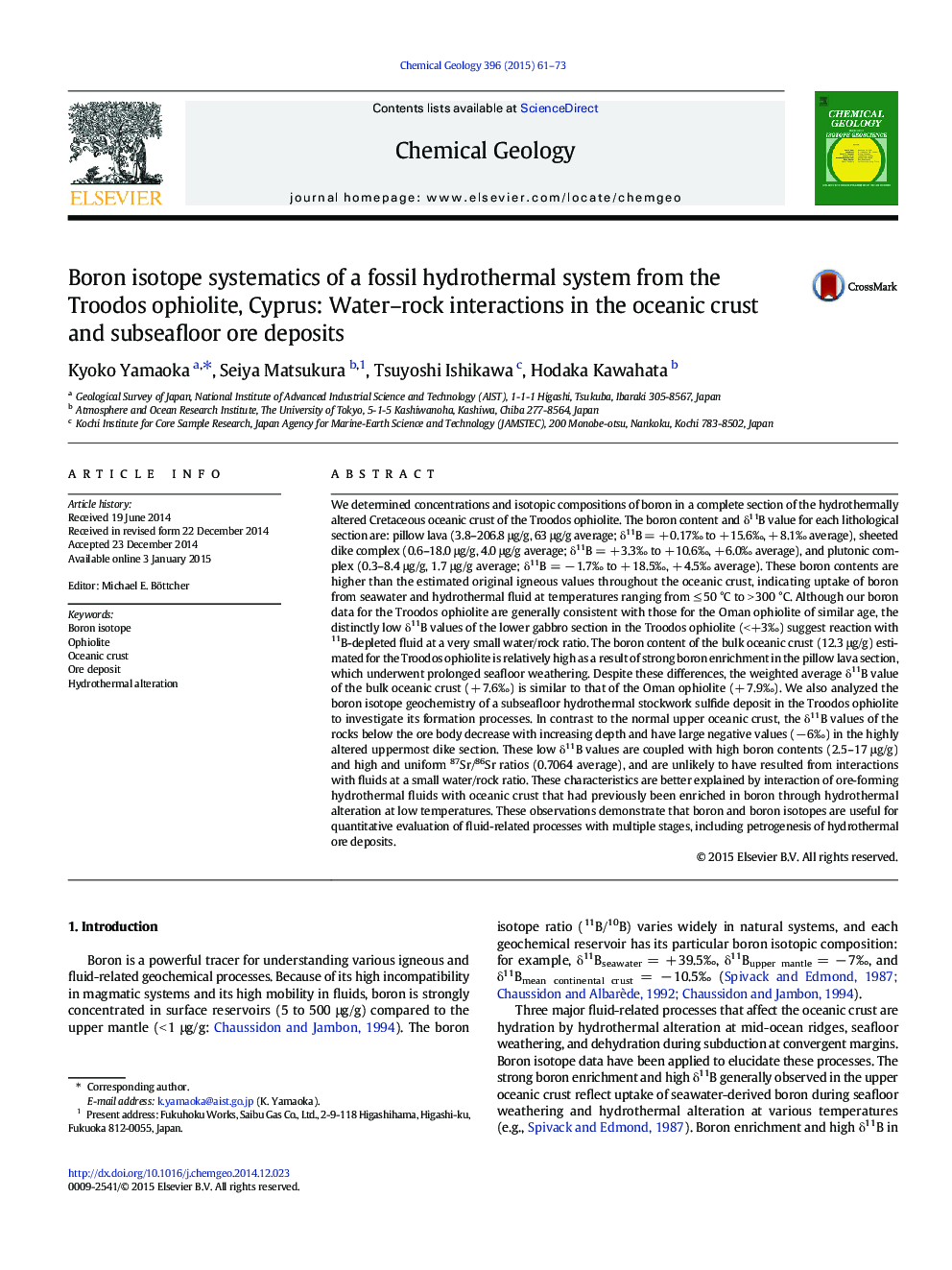| کد مقاله | کد نشریه | سال انتشار | مقاله انگلیسی | نسخه تمام متن |
|---|---|---|---|---|
| 6436502 | 1637577 | 2015 | 13 صفحه PDF | دانلود رایگان |
- Boron content and isotopic composition of Troodos oceanic crust were determined.
- The depth profiles from Troodos and Oman ophiolites were compared.
- We first applied boron isotope geochemistry to a sulfide ore deposit in Troodos.
- Model showed that the ore deposit formed through two-stage hydrothermal alteration.
- Boron isotope systematics is useful for elucidating multiple water-rock interactions.
We determined concentrations and isotopic compositions of boron in a complete section of the hydrothermally altered Cretaceous oceanic crust of the Troodos ophiolite. The boron content and δ11B value for each lithological section are: pillow lava (3.8-206.8 μg/g, 63 μg/g average; δ11B = + 0.17â° to + 15.6â°, + 8.1â° average), sheeted dike complex (0.6-18.0 μg/g, 4.0 μg/g average; δ11B = + 3.3â° to + 10.6â°, + 6.0â° average), and plutonic complex (0.3-8.4 μg/g, 1.7 μg/g average; δ11B = â 1.7â° to + 18.5â°, + 4.5â° average). These boron contents are higher than the estimated original igneous values throughout the oceanic crust, indicating uptake of boron from seawater and hydrothermal fluid at temperatures ranging from â¤Â 50 °C to > 300 °C. Although our boron data for the Troodos ophiolite are generally consistent with those for the Oman ophiolite of similar age, the distinctly low δ11B values of the lower gabbro section in the Troodos ophiolite (<+3â°) suggest reaction with 11B-depleted fluid at a very small water/rock ratio. The boron content of the bulk oceanic crust (12.3 μg/g) estimated for the Troodos ophiolite is relatively high as a result of strong boron enrichment in the pillow lava section, which underwent prolonged seafloor weathering. Despite these differences, the weighted average δ11B value of the bulk oceanic crust (+ 7.6â°) is similar to that of the Oman ophiolite (+ 7.9â°). We also analyzed the boron isotope geochemistry of a subseafloor hydrothermal stockwork sulfide deposit in the Troodos ophiolite to investigate its formation processes. In contrast to the normal upper oceanic crust, the δ11B values of the rocks below the ore body decrease with increasing depth and have large negative values (â 6â°) in the highly altered uppermost dike section. These low δ11B values are coupled with high boron contents (2.5-17 μg/g) and high and uniform 87Sr/86Sr ratios (0.7064 average), and are unlikely to have resulted from interactions with fluids at a small water/rock ratio. These characteristics are better explained by interaction of ore-forming hydrothermal fluids with oceanic crust that had previously been enriched in boron through hydrothermal alteration at low temperatures. These observations demonstrate that boron and boron isotopes are useful for quantitative evaluation of fluid-related processes with multiple stages, including petrogenesis of hydrothermal ore deposits.
Journal: Chemical Geology - Volume 396, 9 March 2015, Pages 61-73
